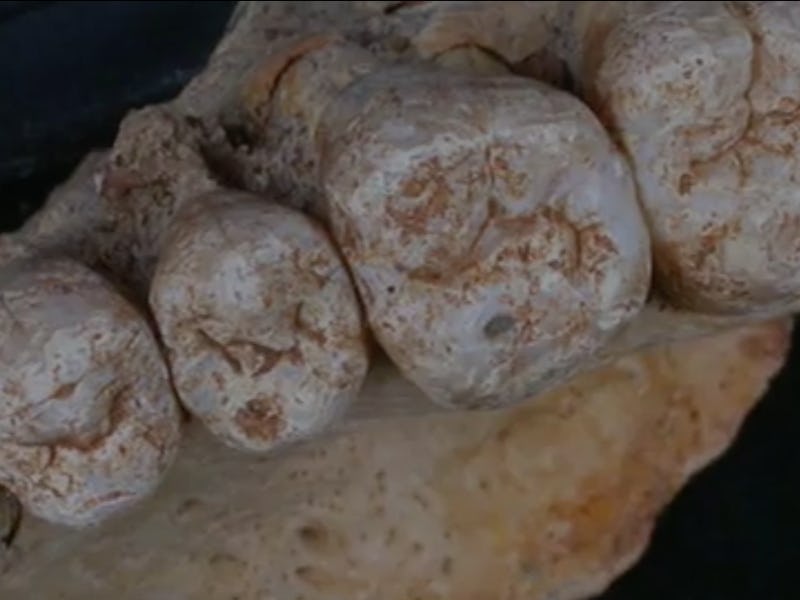Ancient Jawbone Belonged to the Earliest Modern Human to Leave Africa
These old teeth are rewriting the human origin story.

Tucked away beneath the steep western slopes of Mount Carmel, in northern Israel, Misliya Cave holds the remains of some of early humanity’s most intrepid individuals. According to new research published in Science on Thursday, an ancient fossilized jawbone discovered there in 2002 is evidence of the earliest modern human ever to be found outside of Africa, suggesting that its owner left humanity’s home continent some 177,000 and 194,000 years ago — which is about 50,000 years earlier than scientists ever thought.
Until now, the general consensus was that anatomically modern humans left Africa for the first time around 90,000 to 120,000 years ago, and that the largest group of them left in one big exodus around 50,000 to 60,000 years ago. But the new analysis on the jawbone, says Binghamton University anthropologist Rolf M. Quam, Ph.D., a co-author on the new study, throws the old timeline out the window.
“This is the earliest fossil evidence for modern humans outside the African continent,” Quam told Inverse in an e-mail.
“However, there is evidence based on ancient DNA for an even earlier human migration out of Africa by at least 220,000 years ago and probably earlier.”
The jawbone was found in Misliya Cave in 2002.
The story of early humanity’s first great exodus out of Africa has become more complicated in recent years, as new fossils have suggested there were actually multiple journeys out of the continent toward Asia and across the ocean to Australia. In December, anthropologists publishing in Science reported multiple pieces of evidence showing that humans had gotten as far as Asia between 120,000 and 60,000 years ago, arguing that it was time to overhaul the human origin story. The age of the Misliya Cave jawbone, a piece of an upper maxilla containing seven intact teeth and a broken incisor, supports this idea, suggesting that its owner took part in one of those extra-early trips.
While this person was, genetically, 100 percent modern human, it’s not clear whether it looked anything like we do today. “We can’t really say what the owner of the jawbone would have looked like in detail other than to say that the jaw represents a Homo sapiens individual,” says Quam. “So it would have a similar cranium and skeleton as us.”
The maxilla, or upper jawbone, has almost all its teeth intact.
This is important to point out, as anatomically modern humans were not the only hominin species walking around the earth at the time. Our evolutionary relatives, like the Neanderthals and Denisovans, still wandered alongside humans and even occasionally hooked up with them, which is why even some people living now have traces of Neanderthal DNA. “An earlier migration out of Africa implies a possibly earlier date for biological and/or cultural interactions with other local archaic (i.e. non-modern) human groups outside of Africa,” says Quam.
Scientists may not know how the Misliya individual really looked, but they can tell, from findings made around the cave, how the Misliya people in general lived. In and around the cave, researchers have found evidence of stone tools, controlled fires, and remnants of large game species and plant resources. Some of their early settlements had hearths and showed evidence of burned animal bones, too.
“They were likely a highly nomadic hunter-gatherer species who lived in small social groups and moved around the landscape following the migrations of prey species or the changing seasons,” says Quam.
This map, not from the new study, diagrams a new theory of human migration proposing that humans left Africa multiple times rather than dispersing in a single exodus.
How far the Misliya people traveled during their nomadic journeys remains an open ended question, as does whether they gave rise to the ancestors of present-day human populations or simply died out. Regardless, the jawbone’s owner holds the grand title of earliest known individual to have been found outside of Africa — at least, for now. If research trends continue, we’ll likely find evidence of even more intrepid individuals that dared to leave the Sapiens nest at an even earlier date.